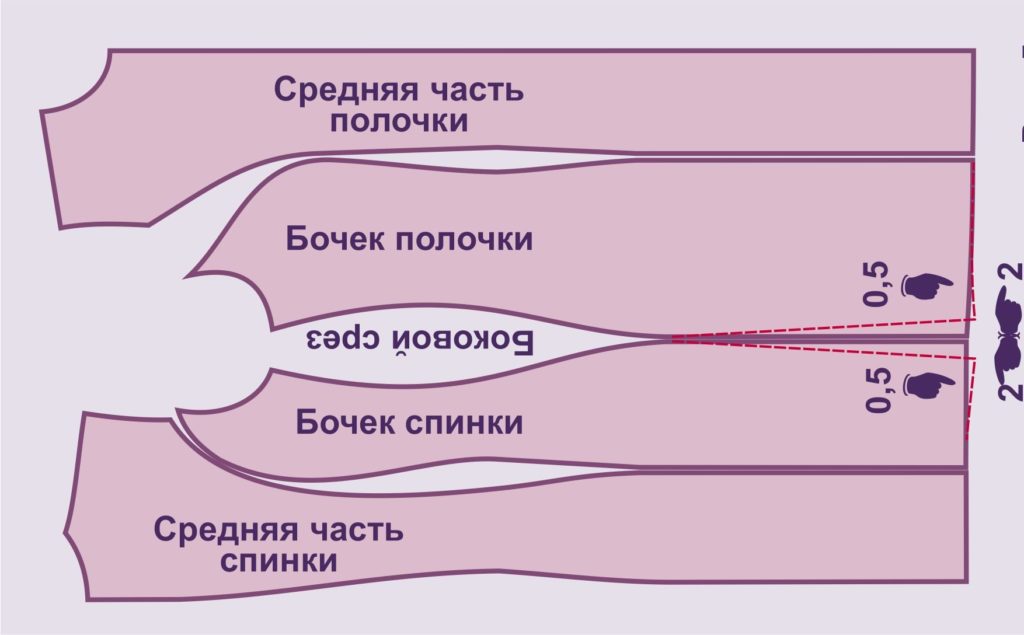The tight-fitting dress, whose silhouette resembles a sheath, created a sensation in the world community, becoming a classic and an integral part of the female image.
 It begins its history in Ancient Egypt, where Egyptian women wore the so-called kalaziris, consisting of linen fabric.
It begins its history in Ancient Egypt, where Egyptian women wore the so-called kalaziris, consisting of linen fabric.
In the 20th century The dress was massively introduced by Coco Chanel, Cristobal Balenciaga and Givenchy, placing it in one of the first places in the fashion world. It is worn everywhere, on the street, in some institution, at a business and social party.
What fabric to choose for a sheath dress
 The variety of types of dresses increases from year to year, stylists strive to increasingly improve and diversify the model, which is soft clay in their hands. The design of new products is being developed in combination with new materials produced.
The variety of types of dresses increases from year to year, stylists strive to increasingly improve and diversify the model, which is soft clay in their hands. The design of new products is being developed in combination with new materials produced.
The basis for choosing fabric is:
- season;
- application;
- complexity of cut;
- woman's age;
- complexion.
For the cold season, drape, knitwear, and bouclé are ideal.In summer, thin, light and hygroscopic materials would be appropriate: linen, cotton, silk, chiffon. These types of fabric wrinkle greatly, which causes great inconvenience, so preference should be given to natural fabrics with synthetic additives.

Models for a business look are made from plain fabrics, and a bright design or an interesting pattern will be appropriate in dresses for every day. For evening or wedding looks, the most expensive and spectacular fabric is used.
To decide what material to use, you need to think about the cut and style of the chosen sheath dress; if the design is complex, it is played with soft and easily draped fabric. The model of a simple design assumes a dense and textured fabric.
Attention! Shiny material can visually increase the volume of a figure, so girls with curves need to choose it carefully, but for slender representatives of the fair sex, on the contrary, it will suit perfectly.
Older women should give preference to darker solid colors, while young women will find bright color combinations just right.
How to take measurements to create a pattern
To take measurements correctly and to be accurate, you must follow some rules:
 the person being measured should stand straight, without changing her usual posture;
the person being measured should stand straight, without changing her usual posture;- be in underwear;
- for indication and convenience of taking measurements, an elastic band is tied around the waist line;
- protruding points are visually indicated.
When working with a measuring tape, it is necessary to apply it tightly to accurately measure the parameters; increments are made after and will be added depending on the chosen design and model.
The main measures are:
- Half-girth of the neck - the neck is measured with a tape and the result is divided in half.
- Half chest circumference - cover the shoulder blades and draw a centimeter above the chest and divide by two.
- Half the width of the back - measure the shoulder blades to the arms.
- Semi-hip circumference - encircles the buttocks and the abdomen is taken into account, the result is divided in half.
- Shoulder length - runs from the neck to the top of the shoulder.
- Sleeve length - from the protruding part of the shoulder to the middle of the palm, the arm is bent when measuring.
- Half waist circumference - the waist is covered with a centimeter and half the value is taken into account.
- Half Shoulder Width - Measurement of shoulder width.
- Bust center - measured between the protruding parts of the chest.
- The length of the front to the waist is measured from the shoulder along the bulge of the chest to the waist.
- Chest height - from the shoulder to the top of the chest.
- Front shoulder height is the distance from the point of the shoulder through the highest point of the chest to the waist.
- The length of the product is from the convex part at the back of the head to the required length.

Step-by-step construction of a pattern for a sheath dress
There are 4 types of dress silhouette:
- tightly adjacent;
- adjacent;
- direct;
- semi-adjacent.
All of them are built according to the same template with allowances for freedom of the silhouette.

To create a pattern, the following steps are taken:
- A grid is drawn consisting of a rectangle, where its height is the length of the product.
- Vertical lines are marked to indicate the back, front and armhole.
- The neckline, the oblique line of the back are built and the shoulder dart is marked on it.
- There is a curved line of the back armhole. The shoulder of the shelf is constructed in the same way as the backrest.
- A breast bulge is visible.
- The curve of the armhole line is connected using the found points.
- The waist and hip lines are measured. Waist recesses are noted on the back and front.
- The points of the side bends and the bottom of the model are connected.
- The drawing is transferred to carbon paper - the patterns are ready.
Simple sheath dress
The extraordinary popularity of the dress is due to its versatility and breadth of design from everyday to festive options. When it first appeared, it was a sleeveless dress with a midi length and a semi-circular neckline. Today it has undergone great changes, in addition to the introduction of various types of sleeves, there are products with a long mini or floor length.

Sheath dress with peplum
A peplum is a small piece of fabric sewn to a belt and, in the classic variation, gathered into a flounce, like another skirt, increasing the ratio of the difference between the bust and hips. Worn by everyone, regardless of shape or age. This model is recommended by many stylists and, according to forecasts, it will remain relevant for a long time, which means it must be in the wardrobe.

Important! A dress with a peplum is not recommended for girls with a pear shape, as it visually makes the lower part of the hips even heavier.
Sheath dress with wrap
The style resembles an ordinary housecoat, as it was presented with a color ornament to the public, who were wary of it. Monochromatic versions of the dress were favorably received. At first they were only black and white with the name wrap dress. Today they come in bright and provocative colors made from a wide range of materials and are extremely popular, since in addition to extreme convenience and charming femininity, it gives the wearer a special romanticism.

How to sew a sheath dress with your own hands
 In order to sew a dress with your own hands, you will need certain knowledge and experience.
In order to sew a dress with your own hands, you will need certain knowledge and experience.
For a beginner, it is better not to take complex models and take help from sewing textbooks or other sources.Next, the parameters are measured and the prepared pattern is taken.
Required materials and tools
If you are a beginner sewing, you should take linen or cotton, as they are not so difficult and capricious to work with.
 The selected natural material may shrink when washed, so when purchasing, you need to take a larger size of fabric in width, wash, iron, and cut it out after all the procedures.
The selected natural material may shrink when washed, so when purchasing, you need to take a larger size of fabric in width, wash, iron, and cut it out after all the procedures.
The stock is selected - lining, adhesive, zipper, threads, buttons, etc.
Of the tools, the most important element is a sewing machine, and not necessarily the latest model; next to it you need an overlocker for processing the edges.
Next on the list are replacement machine needles, scissors, a thimble, pins and, of course, regular needles and chalk.
Advice! A professional iron will be of great help, since all the mistakes and shortcomings of the seamstress can be corrected with its help.
Step-by-step sewing of a dress
Sewing consists of:
- sewing grooves on the front and back;
- processing seams on shoulders and sides.
We sew a skirt for a sheath dress
- grooves are stitched;
- the halves of the skirt are connected and sewn together;
- everything will be ironed out.
Assembly stage
- The front bodice is applied to the front of the skirt, with right sides facing each other, sewn together, having previously connected the darts of both parts, forming a straight line on the front part;
- the prepared and stitched lining is sewn on;
- after the work has been done, the hidden zipper is sewn on;
- the neckline and sleeve armholes are processed;
- All stages of assembly are subject to heat treatment.
Features of sewing a sheath dress
 The peculiarity is that even a novice master can perform tailoring, regardless of the level of training.The most difficult part is transferring the measurements to the canvas, since their correct location and execution makes the fit ideal.
The peculiarity is that even a novice master can perform tailoring, regardless of the level of training.The most difficult part is transferring the measurements to the canvas, since their correct location and execution makes the fit ideal.
A sheath dress is clothing that transcends time and space. Applicable everywhere, sewn from any fabric, once again proving its versatility and practicality for all occasions.


 the person being measured should stand straight, without changing her usual posture;
the person being measured should stand straight, without changing her usual posture; 0
0





